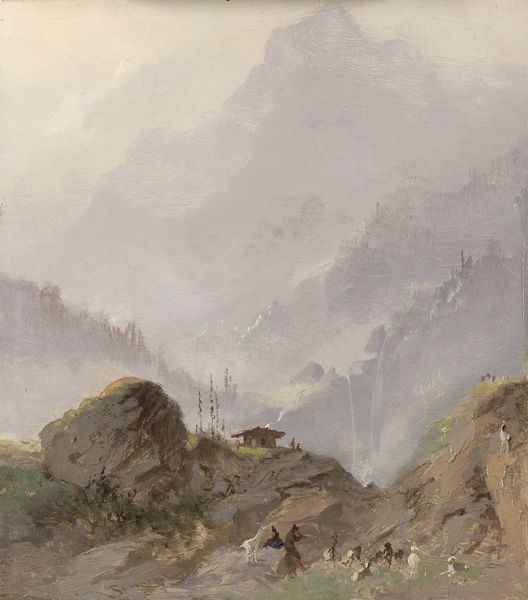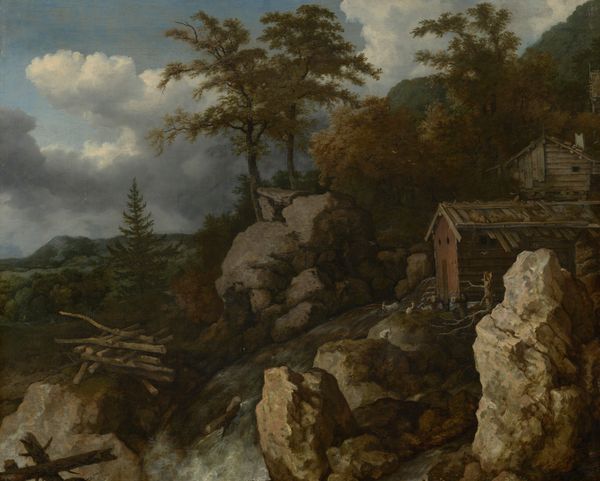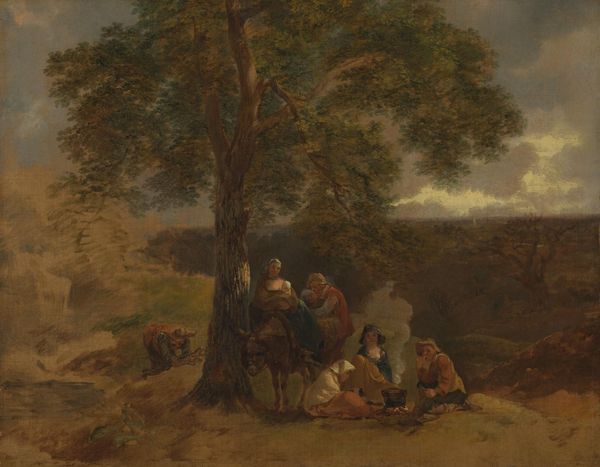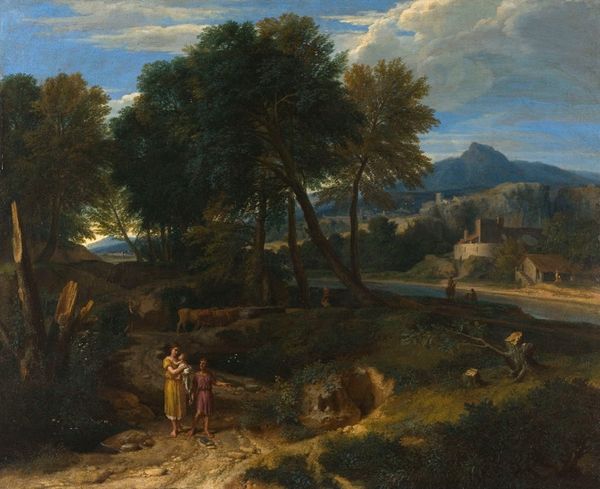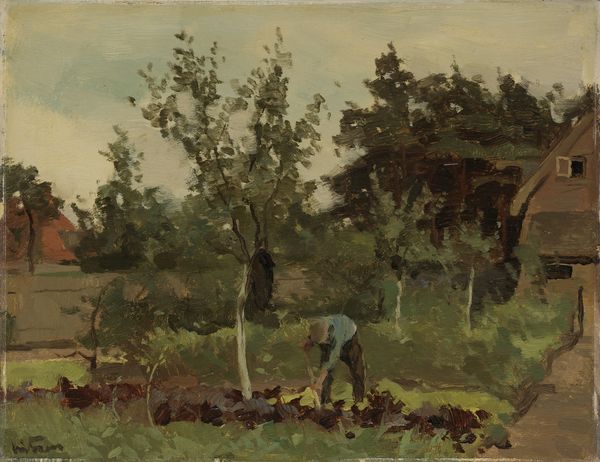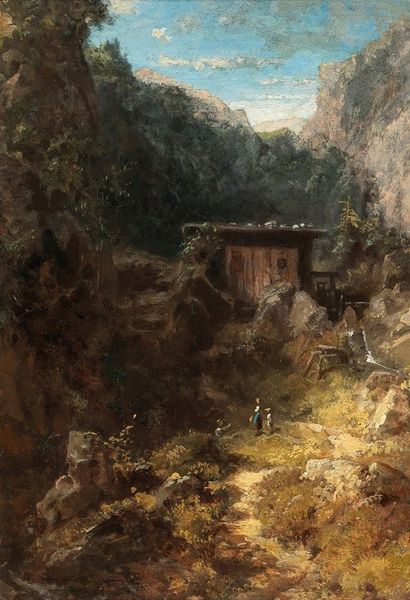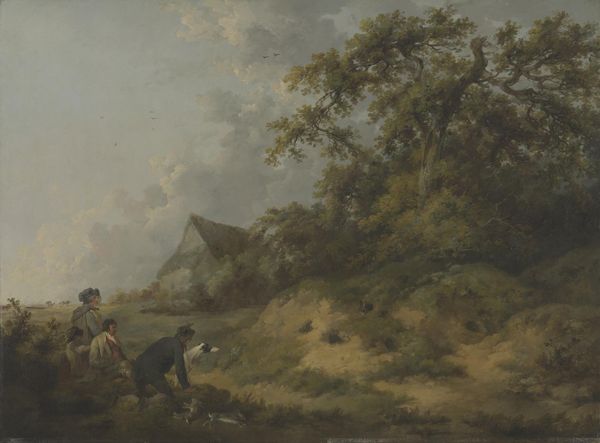
Dimensions: 47.5 x 37 cm
Copyright: Public domain
Curator: Here we have "Robbers with a City in the background," an 1869 oil-on-canvas work by Johann Nepomuk Passini. It blends landscape with what appears to be a genre scene, a narrative moment. What's your initial take on this one? Editor: First thought? It feels like a moment caught between stillness and menace. Like a gorgeous postcard right before someone yells, "Hold it right there!" I love how the golden light almost hides what these guys are up to. And that little dog, a perfect accomplice. Curator: Precisely. Passini situates this potentially violent scene against a picturesque, idealized city backdrop. We have the trappings of Romanticism in the landscape—the sublime, the untouched wilderness—juxtaposed with this group that disrupts that idyll. Editor: Totally disrupts it. They're like weeds in a carefully curated garden. The palette's really doing something too. That hazy light...makes it dreamlike but that brown is giving something grim! And what's with that bundle? Loot or just really messy camping gear? Curator: The bundle, its contents obscured, adds to the ambiguity. It speaks to the politics of imagery, you see? Is Passini critiquing the social order? Is he glorifying the anti-establishment figure? Or simply staging a scene from folklore? He may be exploring the romantic bandit, a trope of the era that could stand as metaphor for resisting institutional oppression. Editor: See, I didn’t get all that! But I see it now. For me, it's more about the dog’s intensity, the robber about to leap. Something's coming, some kinda climax, and you almost don't want to see it. You're on the fence and this canvas puts us right on that rickety barrier between worlds. Curator: That palpable tension is definitely there. Passini captures a transitional moment—literally a crossing over a fence—between social spaces, between lawful and unlawful behavior. And for the 19th-century viewer, likely aware of social bandits in local lore, this may be a deliberate mirroring of reality and myth. Editor: Mirroring indeed! That explains its captivating push-pull dynamic—inviting and repulsive simultaneously. The canvas invites one to see with new, critical eyes. And it doesn't shy away from telling uncomfortable truths about society. Thanks for unraveling Passini's vision—now it’s just the perfect accomplice!
Comments
No comments
Be the first to comment and join the conversation on the ultimate creative platform.



